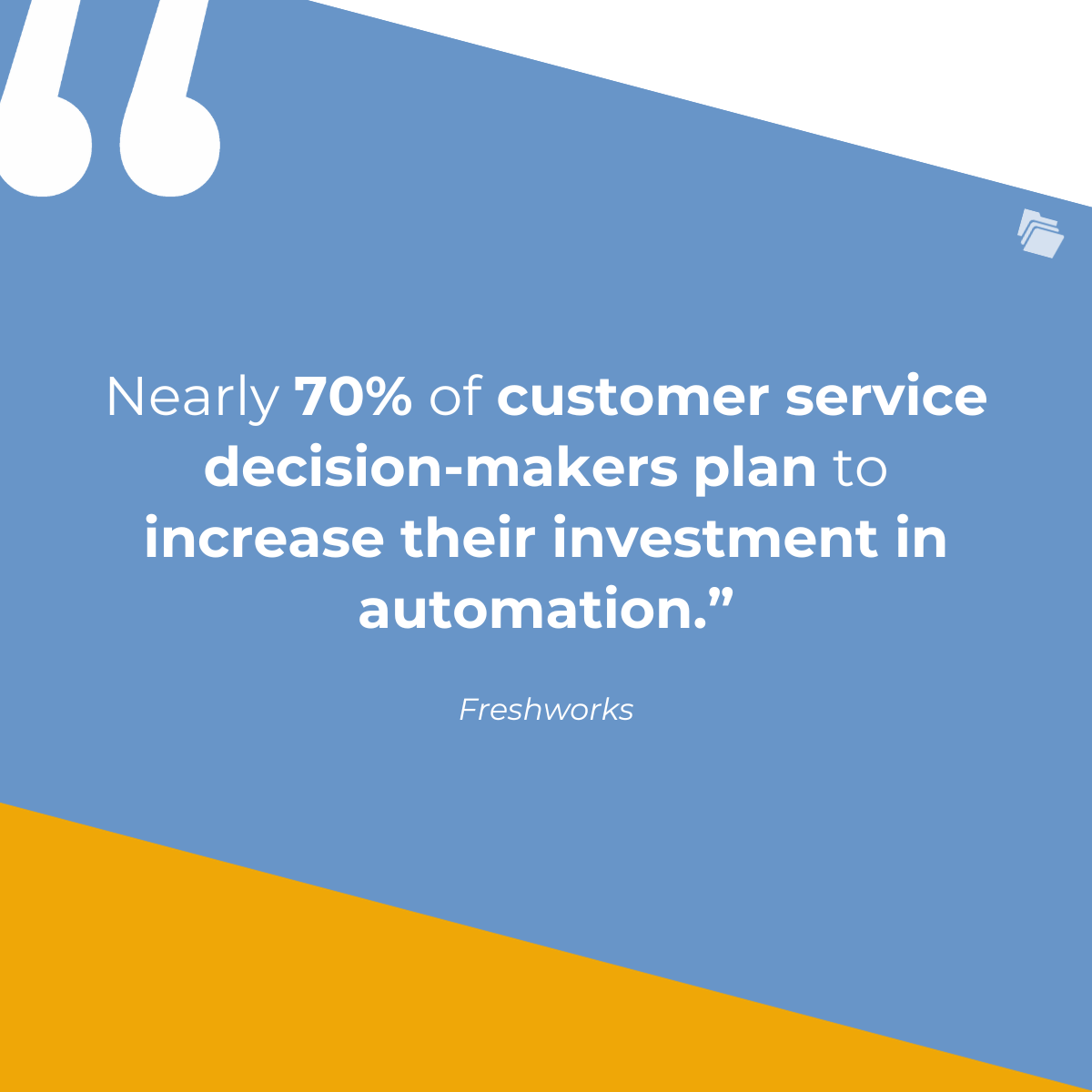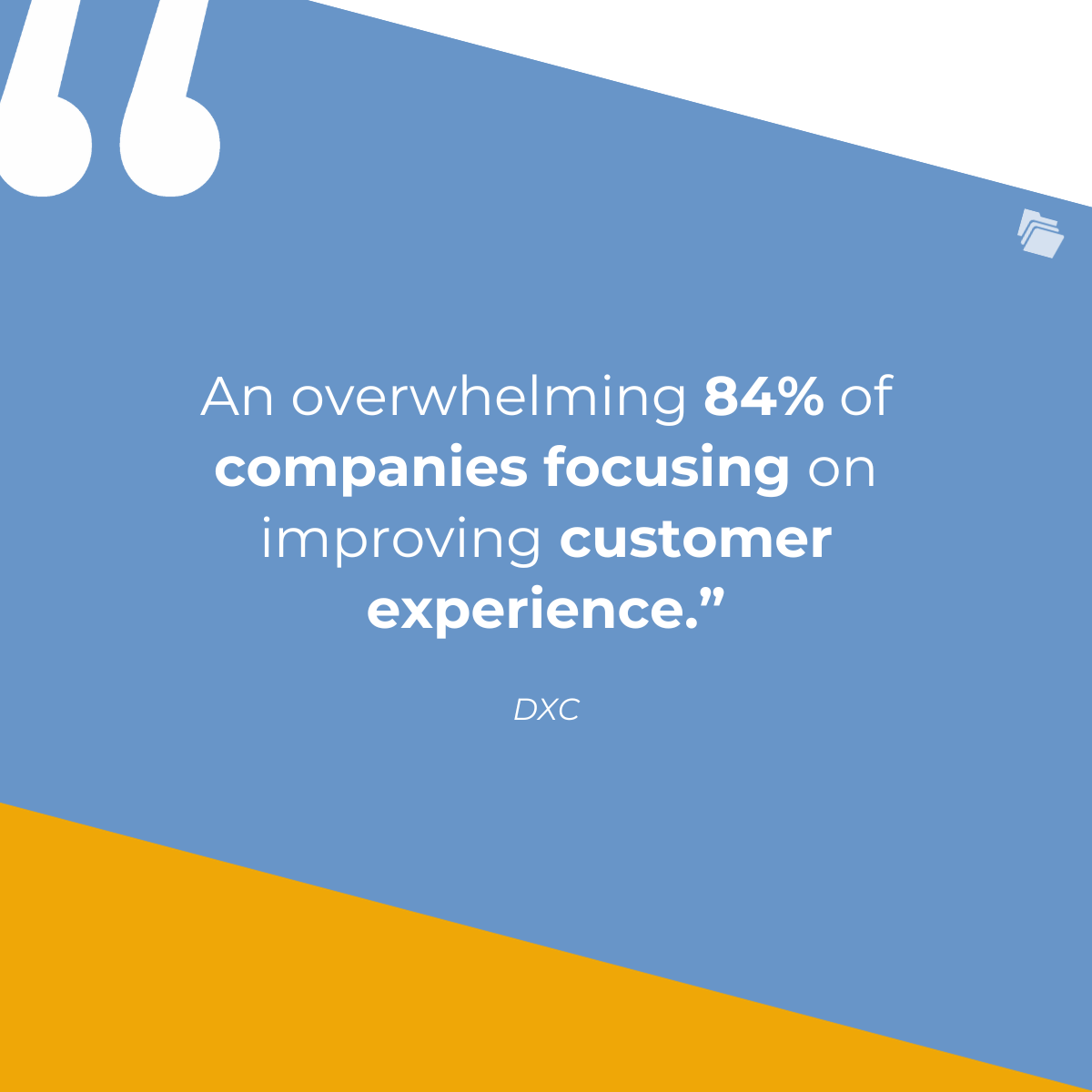5 Ways to Improve Your Bank's Efficiency Ratio
Discover innovative strategies to enhance your bank's efficiency ratio. Learn how to reduce costs and improve operational performance in a...
Effortlessly optimize your customer onboarding process by uncovering Fintech trends, benefits, and crucial factors for selecting the perfect solution.
In banking and financial services, “fintech” — a portmanteau of “financial” and “technology” — has become a critical differentiator between companies vying to attract new customers. As nearly two-thirds — 65% — of customers across demographics now expect automated digital services, fintech platforms offer an opportunity to revolutionize conventional onboarding methods, enhancing the customer journey from the first touchpoint.
Among surveyed financial institutions, 32% report that improving customers’ digital experience is now their top customer service priority. Embracing these technologies not only satisfies the growing demand for digital convenience but also aligns with the financial sector's trajectory toward a more efficient, personalized, and secure customer experience. This guide covers emerging trends in fintech software, the benefits of fintech adoption, and what factors to consider when choosing the right fintech for customer onboarding for your organization.
As the financial industry evolves, customer onboarding is undergoing a transformation driven by fintech innovation. Expectations for digital efficiency are soaring, with most customers seeking automated services as part of their journey. Here are pivotal trends shaping the future of fintech in customer onboarding:
Nearly 70% of customer service decision-makers plan to increase their investment in automation, indicating its important role in enhancing the onboarding process through tools like automated messaging and trigger emails.

With 71% of customers desiring a consistent experience across all channels, fintech is responding by creating seamless access points for services, whether on mobile, desktop, or in-branch.
Simplifying the sign-up and sign-in process is critical. Frictionless entry leads to a 20% higher customer satisfaction rate, making ease of access a priority for fintech solutions.
Leveraging AI and machine learning technologies, fintech is shifting toward highly personalized onboarding experiences. Already, 44% of surveyed organizations report using AI-driven personalization tech to improve customer satisfaction and retention.
The use of blockchain to increase transparency and security in customer onboarding is on the rise, streamlining processes like identity verification and compliance checks.
As 9 out of 10 customers believe companies could improve their onboarding, fintech is poised to fill this gap with innovative solutions that prioritize customer ease and efficiency.
Integrating fintech software into customer onboarding affords significant benefits, streamlining processes, and enhancing the customer experience. These advancements have become increasingly critical as companies strive to meet the evolving expectations of a tech-savvy clientele. Here are some of the key benefits.
About 63% of customers consider the onboarding period crucial when deciding to commit to a service, indicating that a positive onboarding experience is vital for retention.
With 87% of customers advocating for consistent experiences, fintech enables companies to deliver uniformity across various touchpoints, a fundamental component of customer satisfaction.
Approximately 67% of companies identified follow-ups with teams as their largest time drain, indicating that fintech solutions that streamline these processes can yield considerable time savings.
Highly engaged customers are more likely to purchase frequently and spend more, with fintech's personalized onboarding contributing to a threefold increase in annual value per customer.
Fintech can decrease app uninstallation rates by improving user understanding during onboarding, addressing concerns of the 80% of users who have abandoned an app due to complexity.
Educational onboarding content can enhance loyalty, as most customers are inclined to remain with a business that supports them post-sale through educational content.
Regardless of the industry, positive customer onboarding experiences contribute to new product growth.
Among customers across industries, 58% rate personalized experiences as crucial, a demand met by fintech's data-driven customization capabilities.
Positive customer service experiences lead to higher rates of return business for both B2B and B2C customers. Streamlining onboarding with fintech software ensures that customers’ first experience is convenient and stress-free.
An overwhelming 84% of companies focusing on improving customer experience, a primary feature of fintech solutions, have seen a resultant increase in revenue.

Choosing the right fintech product for your business requires due diligence. Implemented fintech must not only align with current business processes and goals but also adapt to future shifts in the industry. Here's a list of the important factors to consider:
The primary driver of fintech adoption is the promise of increased operational efficiency through automation.
The financial sector’s regulatory environment is both complex and critical, making compliance and security paramount when selecting a fintech solution.
A superior user experience can differentiate a fintech solution in a crowded marketplace.
Effective fintech products should not operate in a vacuum but should integrate seamlessly with organizations’ existing tech stacks.
As financial institutions grow, so do their technological needs. A scalable fintech solution can handle increasing volumes of transactions and users without a drop in performance.
With the rapid pace of technological change, a fintech solution must not only meet current needs but also anticipate future developments.
By considering these factors, financial institutions can make a more informed decision when selecting fintech products.
A recent study by think tank McKinsey indicated that implementing fintech solutions provides a significant, twofold competitive edge in today's digital landscape.
These statistics highlight the thriving growth of the fintech sector despite broader economic challenges, indicating that financial institutions with cutting-edge fintech are positioning themselves for rapid growth and increased market share.
FileInvite equips financial service providers with an advanced onboarding solution for streamlining document collection and identity verification processes. The platform reduces your organization’s administrative burden, allowing teams to allocate resources more effectively and focus on enhancing customer relationships.
With a commitment to security and compliance, FileInvite ensures that the onboarding experience upholds industry regulations while offering clients a seamless start. For organizations trying to modernize their approach and deliver an outstanding customer experience, FileInvite is a one-stop fintech solution. Discover the full potential of optimized onboarding by exploring FileInvite's capabilities, while adding convenience and enhanced security to your operations.
To learn more and request a demo, visit FileInvite today.
Discover innovative strategies to enhance your bank's efficiency ratio. Learn how to reduce costs and improve operational performance in a...
Learn how community banks can expand their reach by targeting Millennials and Gen Z. Focus on digital solutions and personalized experiences for...
Discover the crucial lessons banks can learn from the recent Bank of America phishing email scam. Enhance security and protect customer data...
Eliminate the monotony of back-and-forth emails and inefficient systems when gathering client information. Get hours back each week as FileInvite handles the most time-consuming work for you.